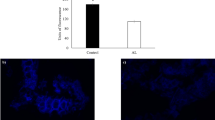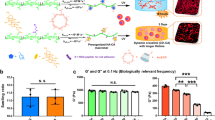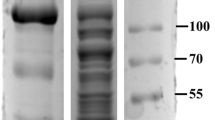Abstract
Recently the potential of immobilized cells for the production of biochemicals has become recognized1,2. Here we describe a simple, stable, continuous method of converting concentrated sucrose solutions into isomaltulose using columns of Erwinia rhapontici cells entrapped in alginate gel pellets, which exemplifies several strategies for maximizing the yield and stability of immobilized cells. This method has been successfully operated on a pilot-plant scale. The isomaltulose has possible applications, which are at present being evaluated by potential users, as a non-cariogenic bulking agent in foodstuffs and phar-maceuticals3–5. Little enzyme activity or viability was lost during immobilization and surprisingly high yields of isomaltulose were obtained. The enzyme associated with the cells was stabilized by immobilizing in alginate rather than other support materials; by using structurally intact non-growing but not necessarily viable cells rather than isolated enzyme, disrupted cells or growing cell preparations; and most dramatically, by using concentrated pure sucrose as substrate and by maintaining complete conversion of the sucrose into isomaltulose. Thus the immobilized cells were about 350 times more stable than free cells, a half life of about 8,600 h being achieved.
This is a preview of subscription content, access via your institution
Access options
Subscribe to this journal
Receive 51 print issues and online access
$199.00 per year
only $3.90 per issue
Buy this article
- Purchase on SpringerLink
- Instant access to full article PDF
Prices may be subject to local taxes which are calculated during checkout
Similar content being viewed by others
References
Abbott, B. J. A. Rep. Ferm. Processes, 205–235 (1977).
Cheetham, P. S. J. Topics Enzym. Perm. Biotechnol. 4, 189–238 (1980).
Roberts, K. R. & Hayes, M. C. Scand. J. dent. Res. 88, 201–209 (1980).
UK Patent Application 2 066 639A assigned to Tate & Lyle PLC.
UK Patent Application 2 066 640A assigned to Tate & Lyle PLC.
Sharpe, E. S., Stodola, F. H. & Koepsell, H. J. Am. chem. Soc. Abstr., 5-D (1954).
Bourne, E. J., Hutson, D. H. & Weigel, H. Biochem. J. 79, 549–553 (1961).
Lund, B. M. & Wyatt, G. M. J. gen. Microbiol. 78, 331–336 (1973).
Weidenhagen, R. Zucker 14, 456–462 (1961).
UK Patent Specification 1 429 334 assigned to the South German Sugar Co.
Bernaerts, M. J. & De Ley, J. Biochim. biophys. Acta 30, 661–662 (1958).
Hayano, K. & Fukui, S. J. biol. Chem. 242, 3665–3672 (1967).
Whiting, P. H., Midgley, M. & Dawes, E. A. Biochem. J. 154, 659–668 (1976).
Whiting, P. H., Midgley, M. & Dawes, E. A. J. gen. Microbiol. 92, 304–310 (1976).
Kierstan, M. & Bucke, C. Biotechnol. Bioengng 19, 387–397 (1977).
Cheetham, P. S. J., Blunt, K. W. & Bucke, C. Biotechnol. Bioengng 21, 2155–2168 (1979).
Cheetham, P. S. J. Enzym. microb. Tech. 1, 183–188 (1979).
Politis, D. J. & Goodman, R. N. Appl. envir. Microbiol. 40, 596–607 (1980).
Lilly, M. D. & Sharpe, A. K. Chem. Engng, Lond. 215, CE12 (1968).
Mandelstam, J. Bact. Rev. 24, 289–308 (1960).
Trinci, A. P. J. & Thurston, C. F. Symp. Soc. gen. Microbiol. 26, 55–80 (1976).
Thurston, C. F. Process Biochem., 7, (8) 18–23 (1972).
Astoor, A. & King, E. J. Biochem. J. 56, XLIV (1954).
Sloneker, J. H. & Orentos, D. G. Nature 194, 478–479 (1962).
Author information
Authors and Affiliations
Rights and permissions
About this article
Cite this article
Cheetham, P., Imber, C. & Isherwood, J. The formation of isomaltulose by immobilized Erwinia rhapontici. Nature 299, 628–631 (1982). https://doi.org/10.1038/299628a0
Received:
Accepted:
Issue date:
DOI: https://doi.org/10.1038/299628a0
This article is cited by
-
Economical production of isomaltulose from agricultural residues in a system with sucrose isomerase displayed on Bacillus subtilis spores
Bioprocess and Biosystems Engineering (2020)
-
Display of a sucrose isomerase on the cell surface of Yarrowia lipolytica for synthesis of isomaltulose from sugar cane by-products
3 Biotech (2019)
-
Current studies on sucrose isomerase and biological isomaltulose production using sucrose isomerase
Applied Microbiology and Biotechnology (2014)
-
Enhancing isomaltulose production by recombinant Escherichia coli producing sucrose isomerase: culture medium optimization containing agricultural wastes and cell immobilization
Bioprocess and Biosystems Engineering (2013)
-
Purification and characterization of a highly selective sucrose isomerase from Erwinia rhapontici NX-5
Bioprocess and Biosystems Engineering (2011)



